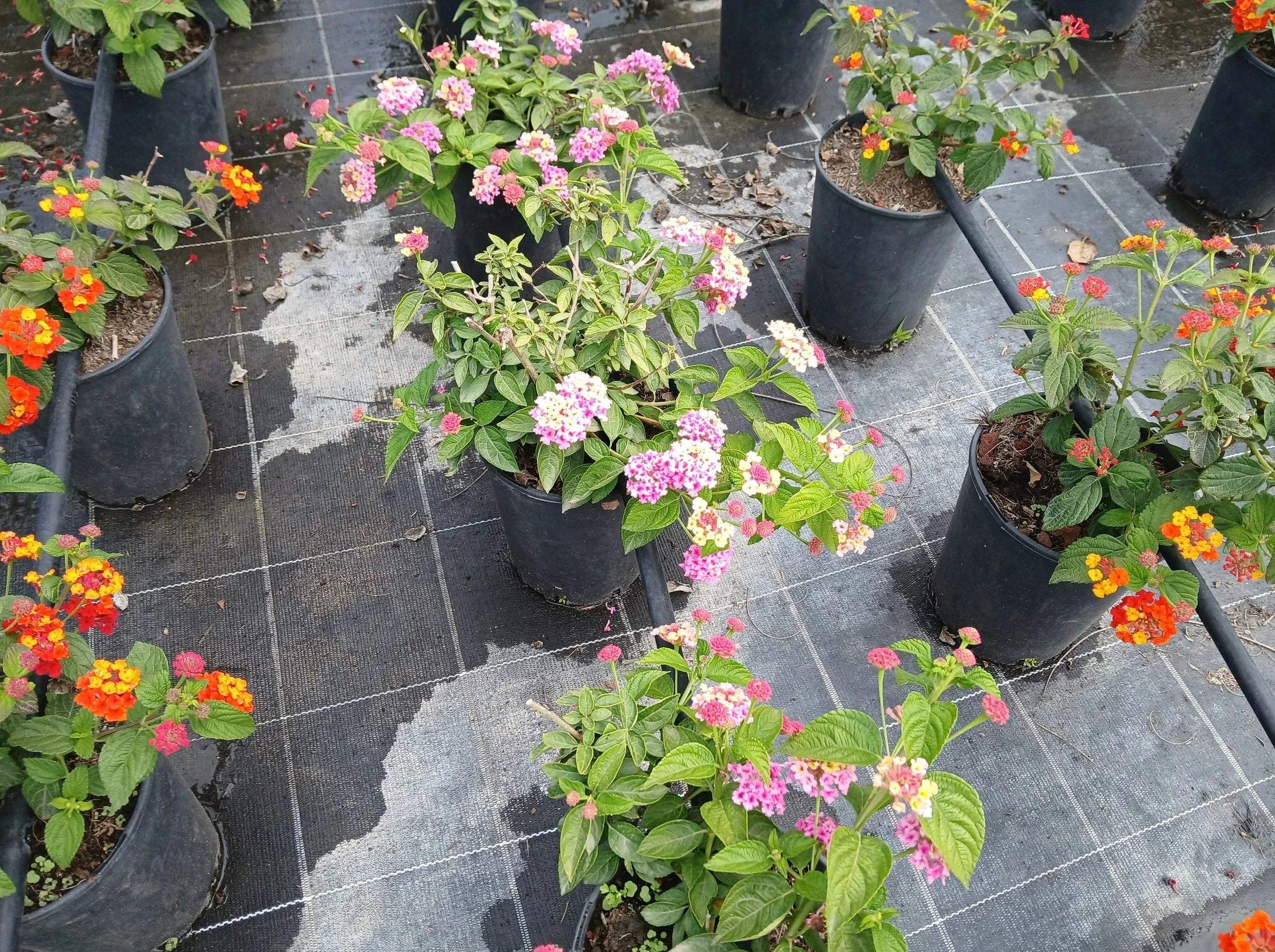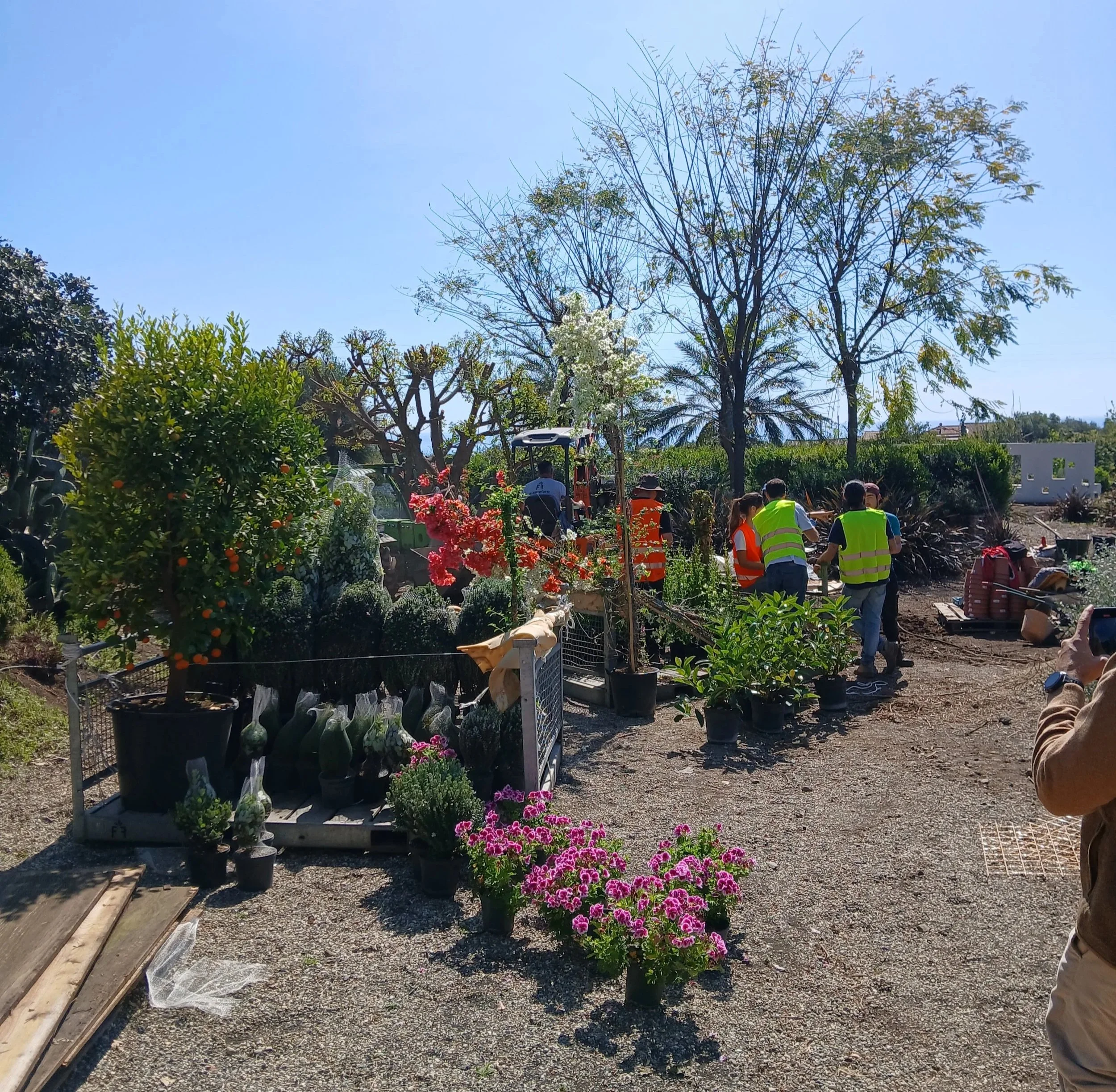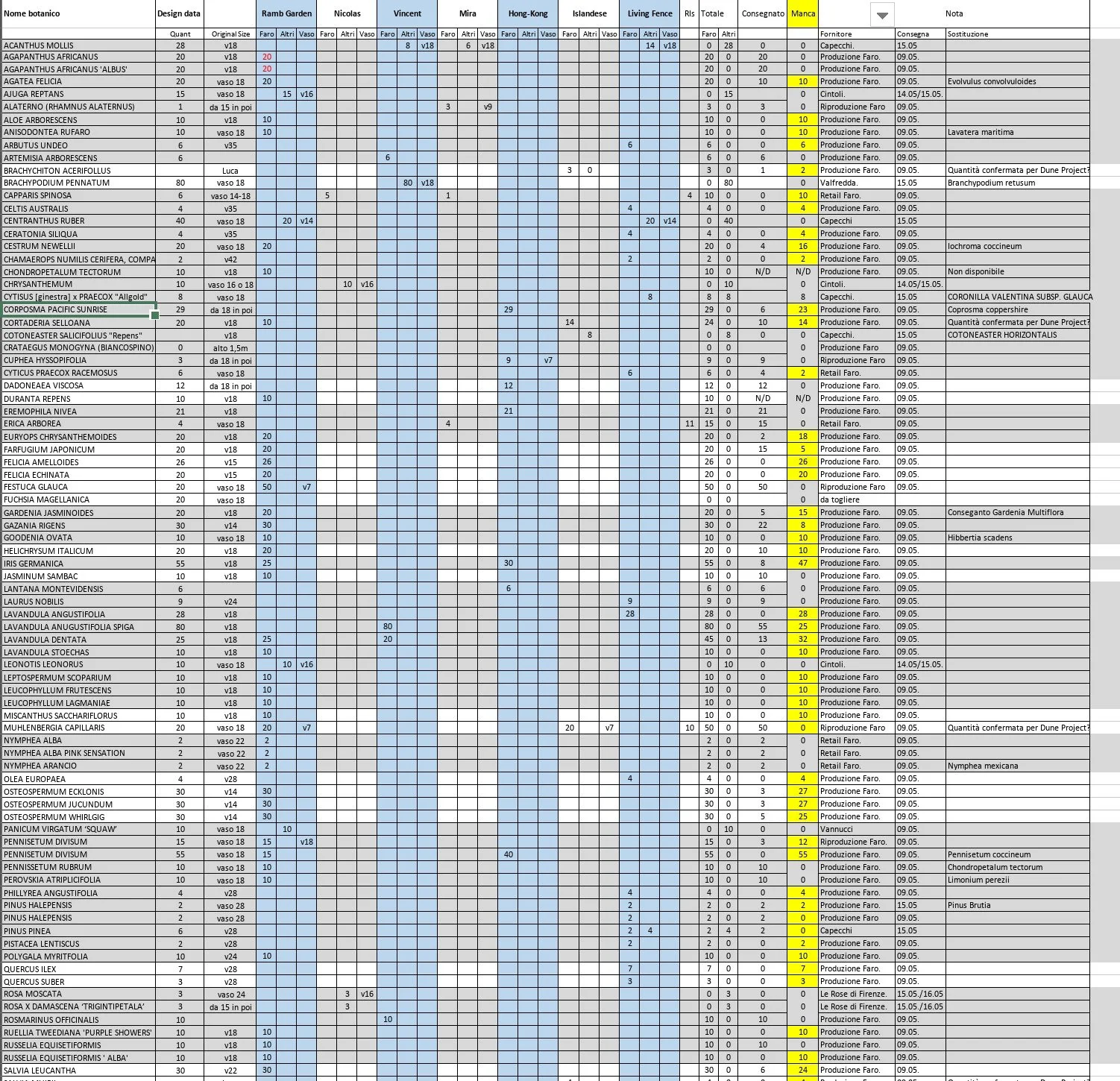PLANT PROCUREMENT AND LOGISTICS FOR THE FESTIVAL
DATE: April–May 2025
ROLE: Plant procurement and logistics for the Radicepura Festival, managing deliveries of around 1,500 plants.
NARRATIVE:
Behind the scenes of the plant direction
During the preparation of the Radicepura Festival, I was entrusted with managing and coordinating the plants. It hadn’t been foreseen as a separate role, but with ten gardens being built simultaneously, it quickly became clear how necessary it was to have someone dedicated to orchestrating the plant logistics.
I took care of sourcing from external nurseries, verifying the sizes available in the in-house nursery, maintaining constant dialogue with designers to assess substitutions or adaptations, and finally coordinating deliveries and distributing plants across the gardens.
Over 1,500 plants, belonging to nearly 100 genera and species, each carefully chosen by the designers. I approached the task methodically: I built a central database with all plant requests, including pot sizes and quantities. After an initial review with the technical director, I contacted about twenty nurseries across Italy, comparing availability, costs, and timelines.
Races against time
At times, it felt like a real race against the clock. External deliveries had to align perfectly with internal supplies, and every delay risked disrupting the entire schedule. When the trucks arrived, I personally oversaw the distribution of plants to each garden—armed with an A3 sheet full of rows and columns, pencil in hand, ticking off plant by plant. Almost comical to see, but very real. I still remember the morning of the inauguration, when the last roses arrived from central Italy: they were planted just in time.
Between rare plants and substitutions
Substitutions were one of the most delicate aspects. One designer had requested chrysanthemums (Chrysanthemum spp.), but they weren’t available in Sicily; I had to source them from the north. A proposed replacement with Ajania pacifica (a similar species, but less representative) was politely but firmly rejected. “That’s not quite what I had imagined,” the designer said, and I understood exactly what he meant.
Another garden, inspired by the Mediterranean garrigue, required Brachypodium retusum, a very specific grass described in Sicilian floras as rare, tied to abandoned fields and arid pastures. Commercially, it was nowhere to be found. After much research, I tracked down Brachypodium pinnatum in Lombardy—a related species—and managed to have 80 pots delivered in time.
Then there was red valerian (Centranthus ruber)—one of my favorite wild plants: rustic, resilient, long-flowering. Every time I climb from the coast up to the slopes of Mount Etna, I find it everywhere: on dry-stone walls, on roadside banks, even at 1,900 meters. And yet, it wasn’t available commercially in Sicily. I had to bring it in from Tuscany.
When a handwritten note takes your breath away
Sometimes even the smallest annotation could spark confusion. On one project drawing, I read “50 cm” next to Brachychiton acerifolius (the flame tree). I assumed it referred to height and ordered small specimens—but the designer meant trunk circumference. You should have seen his eyes when the delivery arrived! Thankfully, thanks to alternative stock in the nursery, we were able to adjust quickly without slowing down the work. But for a moment, my heart skipped a beat.
It was a role of great responsibility, made of listening, adapting, balancing the bigger picture with attention to detail. I learned that in the world of plants, every centimeter, every pot, every single day of delay can change everything—but also that with passion and method, every piece eventually finds its place.



